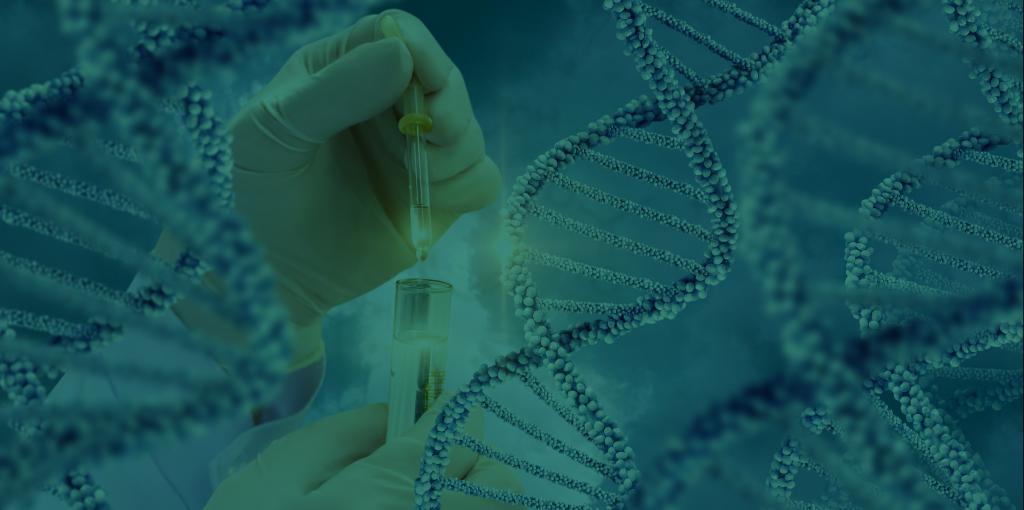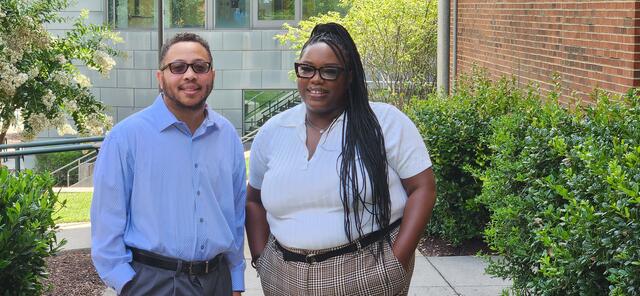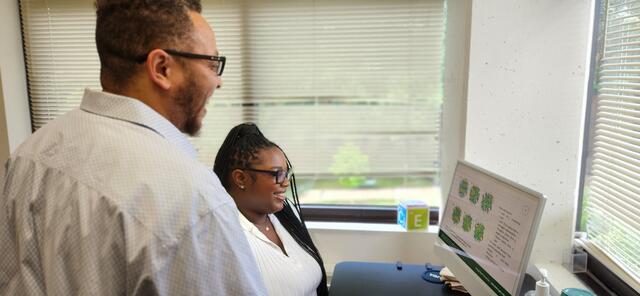Admission CTAs
Planting the ‘seed’ to advance nanoparticle growth reactions
Gold nanoparticles play an important role in some of today’s most successful therapeutic treatments for conditions like cancer and arthritis, while also supporting many medical sensory applications and the targeting of cells within the body. Though the synthesis of gold nanoparticles is a process studied and applied for more than 20 years, scientists are just now understanding how they originate.
In a study published by Nature Communications, researchers from George Mason, including Interim Chair for Mason’s Department of Chemistry and Biochemistry Andre Clayborne and Chemistry PhD candidate Nia Pollard, as well as researchers from John Hopkins University, Princeton University, and Rice University identified an atomically precise “seed” that will develop into a specific nanoparticles type—opening the door for scientists to understand how to produce specific gold nanoparticle shape based on a given application.
“Ideally what we hope they (scientists) can do is really start zeroing in on more of these seeds, because we want to be able to control the synthesis route,” said Interim Chair for Mason’s Department of Chemistry and Biochemistry Andre Clayborne, one of the study’s authors. “Think of this seed the same as growing a tree. If you want an apple tree, you need an apple seed. Same for a pear tree. Here we’re using seeds to grow gold nanoparticle types like rods or disks. Ultimately tailoring nanoparticles with specific properties.”
Until now, information on the size, structure and chemical properties of these seeds remained limited, leaving scientists unsure of the mechanics involved with nanoparticle growth reactions. This study, Atomically precise nanoclusters predominantly seed gold nanoparticle syntheses, found that the predominant entity in synthesized seed solutions is an inorganic molecular cluster called Au32X8[AQA+•X-]12 or gold 32.This provides a key to understanding the mechanistic starting point for nanoparticle synthesis and further research to find the source for other growth reactions.
Using a combination of synthesis from Matthew Jones’ research group at Rice University, state-of-the-art imaging techniques by Yimo Han’s research group (Princeton), and molecular dynamics simulations from Rigoberto Hernandez’s group (John Hopkins) Nia Pollard, a Mason Chemistry PhD candidate was able to generate optical spectra to help confirm the structure and composition of gold-32. The initial gold-32 structure originated from a previous study Clayborne and Pollard conducted on gold 32 in 2019. “We still don’t know what other gold clusters may be involved in the synthesis of gold nanostructures, but our research identifies an important step,” said Pollard.
Mentorship continues at Mason
Pollard met Clayborne while an undergraduate at Howard University. She worked alongside Clayborne while earning her bachelor’s degree—moving later to Mason to earn her PhD. “He’s been a major guidance for me,” she said. “He’s so supportive and pushes me to do my best. I think he saw something in me that I didn’t see myself.”
Pollard and Clayborne are currently working on a project in collaboration with IBM that uses quantum computing to understand the properties of nanoparticles.



